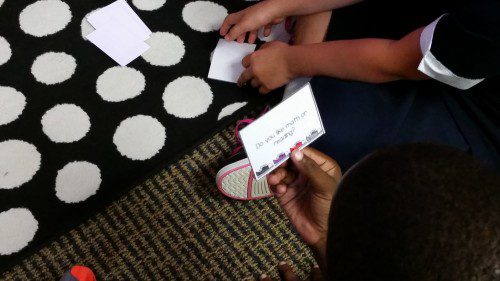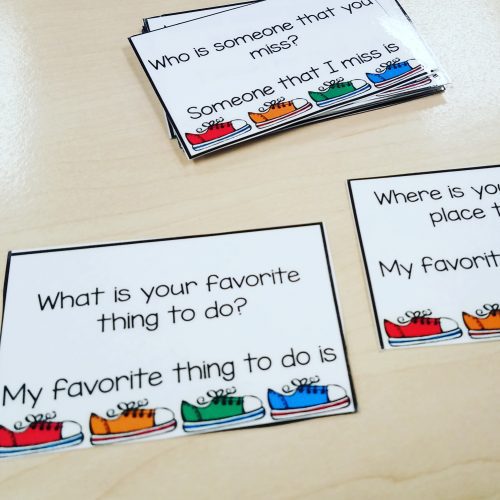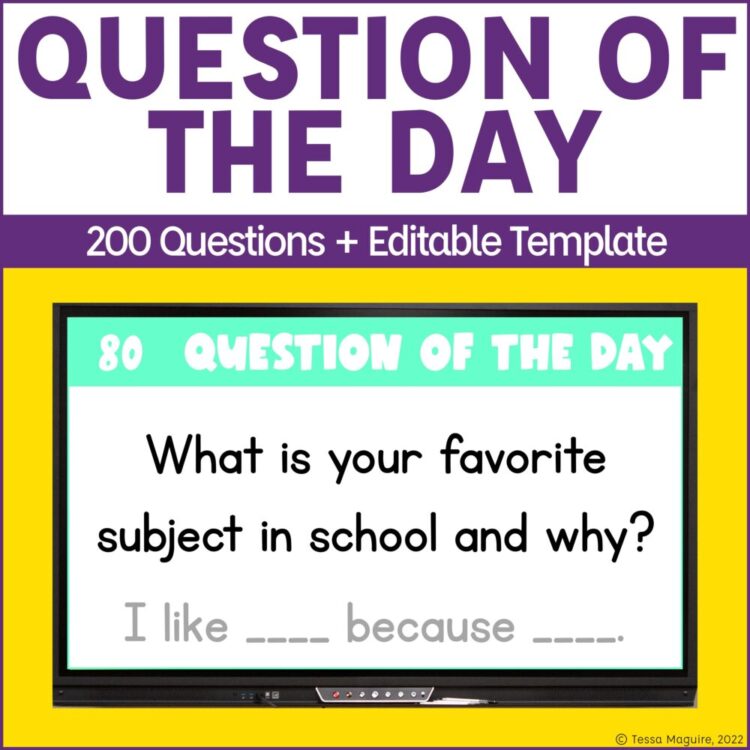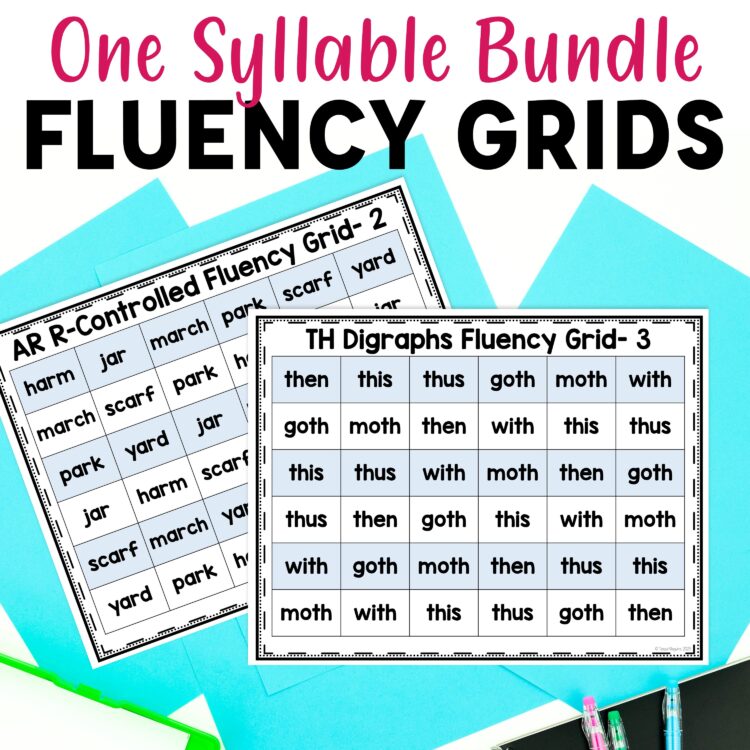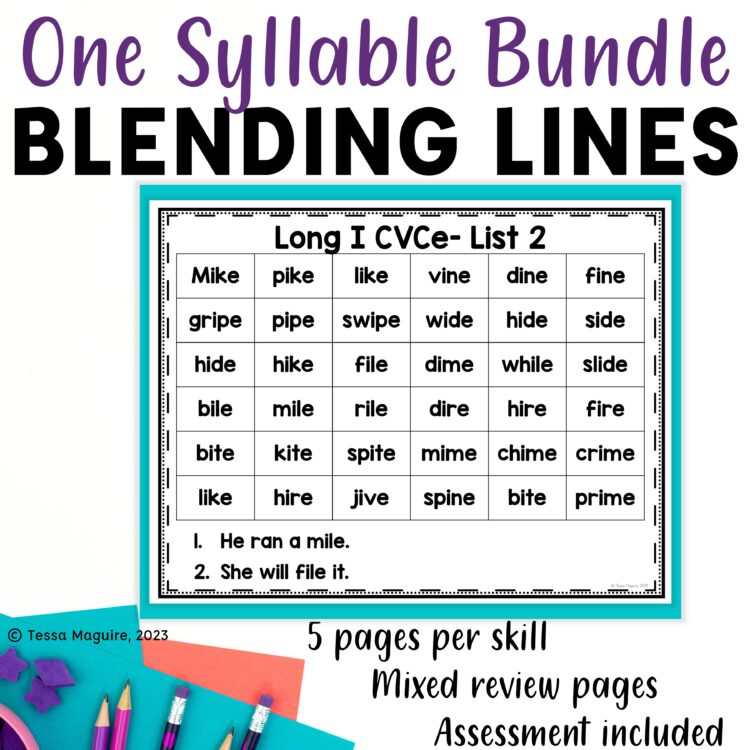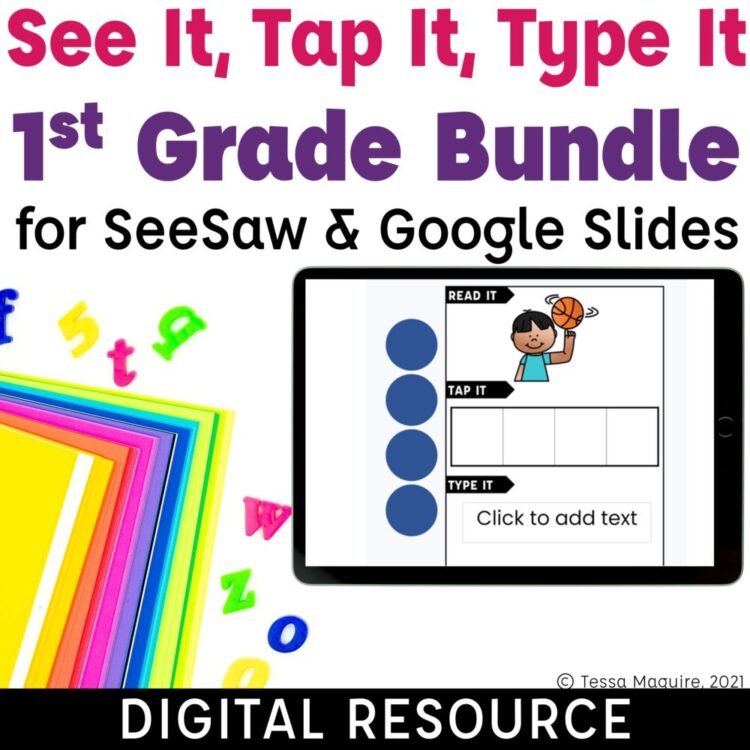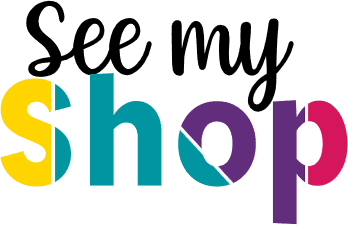© 2024 Tales from Outside the Classroom ● All Rights Reserved
Build Oral Language Skills with a Morning Meeting Question of the Day
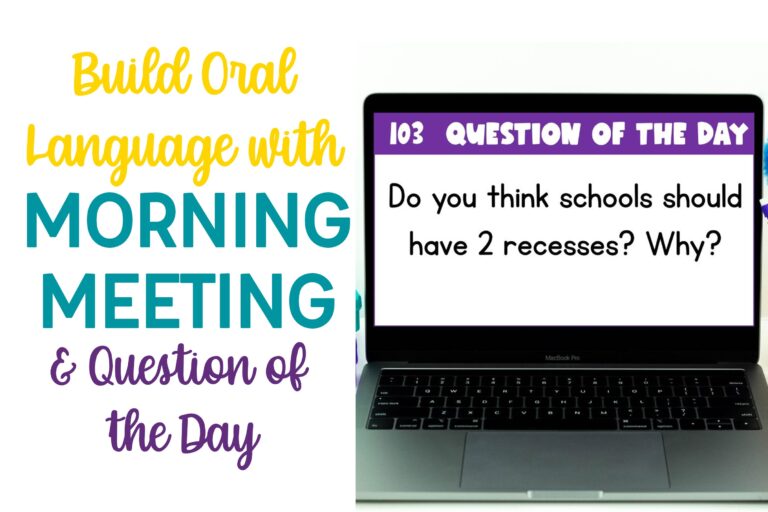
Oral language is an often forgotten about aspect of our classrooms. Students cannot write what they cannot say. We build strong readers and writers through our oral language work. Dialogues about learning, classroom systems such as think-pair-share, and routines for talking in complete sentences all help students develop the oral language skills they need. At the same time, morning meeting is a routine central to our classroom community. It’s a time to get to know one another. It gives students opportunities to share and ask questions of each other. It is the time we carve out to ensure every student is seen and heard. It’s a time for joy and a pause into our days that are often too focused on moving forward. Morning meeting is such an important time for building social-emotional skills, but it also gives us so many opportunities to work on oral language, grammar and syntax.
Morning Meeting
Morning meeting is traditionally done right at the start of the day. In reality, it doesn’t always happen that way, but, for me, I like starting the day off on a positive, calm note. Most years, we do our morning meeting after our morning work since I’ve often had students trickling in. I want to ensure each student is present in our meeting, as much as in my control. We all have different routines in our day, so find the time that works best for you.
I call students down to the rug that’s central for our instruction. I like to have the rug as our home for meeting and for most whole group instruction. Us sitting together, in a much smaller space, just helps with the close-knit feel I’m looking for. I have my students sit around the rug, forming a large, often misshapen, oval. This makes it possible for students to easily make eye contact with each other. It also makes it easier for students to realize that their attention should be on the speaker, and not with me. I also like to give my students assigned spots for morning meeting. I find that this makes our movement quicker. It also allows me to create some key student partnerships. If I have a student that doesn’t seem to be building relationships as easily, I can put them with a student I think would mesh well with them. Or. I can put students that need some visual reminders in key locations around the oval.
Components of Morning Meeting
There are 4 components to the traditional morning meeting: Morning message, greeting, activity, and share. Some programs may vary from these 3 routines slightly, but these tend to be the most common.
Morning Message
The first part of our morning meeting is the morning message. I use my Daily Schedule & Morning Message to display our day’s schedule, our student of the day, and the morning message. Our morning message gives students a look at our day and what they can expect. I let them know key changes in our regular routine. I also use this time to give praise for yesterday, or something I’m hoping to reinforce today.
Greeting
The next morning meeting component is the greeting. The purpose of the greeting is to make every student feel acknowledged and welcomed into the classroom. Each student is greeted by at least one other person in the classroom. The greetings we use change throughout the year. We start out with a simple Good Morning, Name. I also try to incorporate “hello” in other languages, especially those native to my students and their families and others I think it’s great for them to know. These are the versions of hello I typically use in my classroom:
Spanish: Hola!
French: Bonjour!
German: Guten tag
Japanese: Konnichiwa
Hawaiian: Aloha
I would encourage you to incorporate languages important to your students and their families. You can ask students to be expert pronunciation guides, or utilize Google or Alexa to help support you. Even if your pronunciation isn’t spot on, students will appreciate the attempts to make their home language feel present in the classroom.
Another aspect of our greeting is often a handshake or a high five. I like to do the handshake so we can talk about the norms of handshakes and practice making eye contact while shaking hands. Of course, there’s many other ways to incorporate a greeting into your morning meeting. You can do a different one every day, or have a large repertoire you spiral through.
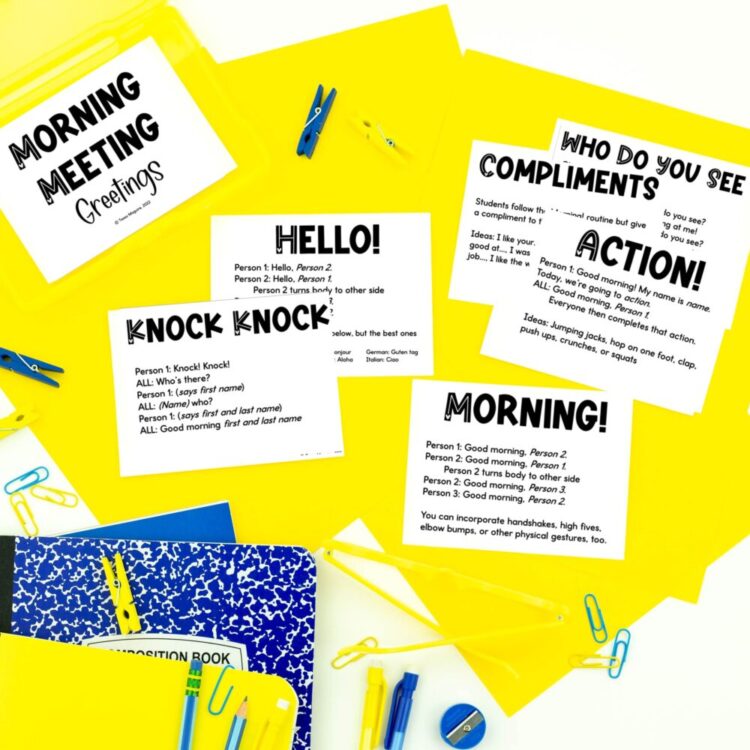
Looking for more morning meeting greeting ideas? I have 15 Morning Meeting Greetings in one easy to use, black and white download. Fill out the form below to have it sent to you straight away.
Morning Meeting Greetings
Sign up to receive your free 15 Morning Meeting Greetings! After confirming your email, you’ll receive the file and be signed up for my weekly newsletter.
Thank you!
You have successfully joined our subscriber list.
Activity
A group activity of some sort is often included, especially if you’re following a specific morning meeting format from a specific program. This tends to be the aspect that I struggle to fit in most days. Our day is so crunched for time. And while I believe in the power of morning meeting, I just struggle to find more time to include team building activities. I do try and incorporate them some at the beginning of the year, when we’re really trying to build relationships with each other. I also try to utilize days before and after breaks or field trip days, where are schedule is already awry, to incorporate activities.
Share
The last component of most morning meetings is the share. Like everything else, it can look many different ways. It’s an opportunity for students to share with others. If we have time, often at the beginning of the year, or when our schedule is otherwise interrupted, I incorporate a more broad share. Some programs call this sharing the “news”. I also try to include this on Mondays so students can share about their weekends if they would like. I call it just “share” and students can share anything they would like. This is when I also allow my students to opt-out and they can pass when it’s their turn.
Most days, our morning meeting wrap up is our Question of the Day. I first started implementing Question of the Day as my share routine with my Kicking off a Great Year unit. I use the scaffolded question cards to introduce restating the question with our acronym PQA (Put the Question in the Answer) alongside our student interviews. You can see more about this in my post Ideas to Teach Students to Restate the Question. We do a few cards whole group, and then I split students up into small groups to read and respond to cards as they get to know each other. This is also when I introduce expectations around someone else speaking.
After we use the scaffolded question cards in small groups, I choose a card a day to do during morning meeting. Sometimes we even do a couple once students have become pretty quick with it. Students read aloud the question on the card and respond in a complete sentence while restating the question in their answer. If I’m teaching first grade, I use the scaffolded cards for several weeks. But, most of my time has been in third grade and I’m able to move to the non-scaffolded cards pretty quickly.
Once I started implementing this routine, it became abundantly clear that our morning meeting was the perfect place to practice restating the question. Before students should be expected to use it in their writing, they have to be able to do it orally. By establishing the expectation during morning meeting that students answer every question in complete sentences with a restatement of the question, it becomes much more seamless during the rest of the day. Students also build so many other oral language skills during this time as well. They work to answer different types of questions, give answers in compound and complex sentences, and generate complete thoughts.
This year, in addition to using the question cards from Kicking Off a Great Year, I’m also going to implement a digital Question of the Day.
Question of the Day
Question of the Day is just that: a daily question prompt. It’s designed with morning meeting in mind. Students are given a question to respond to in a complete sentence. At the beginning of the year, the questions focus on getting to know students. They answer questions about themselves, their families, and their likes and dislikes. It’s designed for students as young as first grade, but can easily be used with 3rd and 4th graders!
A variety of question types are included to give students practice answering different types of questions and restating the question in different ways. When a new question type is given, students are given response frames for several days. After, the support is removed and students are expected to generate the complete sentence independently. With my third graders, I will likely move away from scaffolded questions pretty quickly in the year, as long as my students demonstrate their readiness. I find that at the beginning of the year, my third graders always struggle with this routine because the expectation hasn’t been there, previously. After a few weeks, it becomes second nature to them. I intentionally built the questions to begin with simple sentence responses, and to longer responses requiring details and/or justification. Students get specific practice with and and because.
Question of the Day is provided in 3 formats: Powerpoint, Google Slides, and a PDF. My hope is that this enables anyone to use it regardless of the digital compatibility with your device.
200 different questions are included, along with an editable template in Powerpoint and Slides. With 200 given prompts, there are extras included for you to swap things out if you’d like. Have a special program and want to incorporate it? The editable template makes it easy to create your own!
“What are two things you saw at the museum yesterday?”
“Name two animals you saw at the zoo.”
These are just two examples of questions you might use as your Question of the Day to connect with a special event. The power Once students understand the expectations around Question of the Day, it’s easy to incorporate different opportunities with it. Rather than having each individual student share orally for the whole class, students can share privately with a partner with a few sharing aloud. Or, students can be broken up into groups to each share with just a few key students sharing orally.
It’s also easy to incorporate written responses with morning meeting Question of the Day. Students can write sentences on their dry erase board, a Post-It, or index cards. With the sentence frames displayed, students are then just responsible for encoding the words specific to their response. This is perfect written practice for young students to apply what they’ve been learning. It can be incorporated during morning meeting time, or even as a precursor during morning work. Obviously, adding the writing component can extend the time needed, so I would pick and choose when to include it. With that said, it’s valuable practice to apply what’s been rehearsed with a partner orally into writing and is exceptional practice for young students.
Take a closer look at my Question of the Day unit in my TpT store.
Have questions about morning meeting or question of the day? Leave them in a comment below!
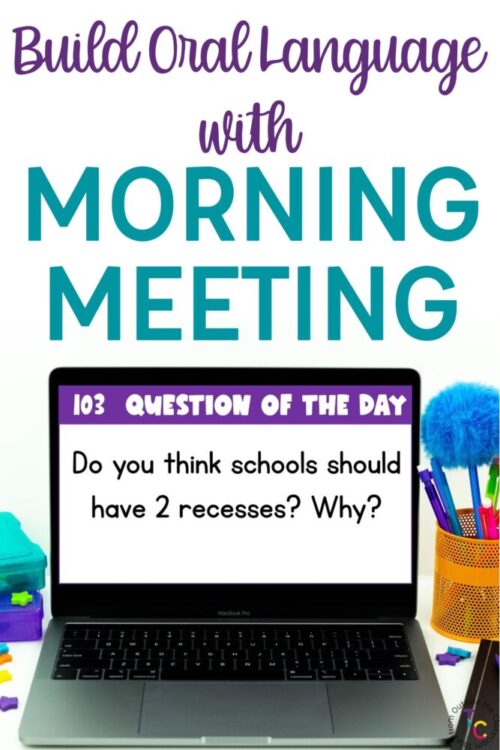
Newsletter Sign Up
Signup for my weekly-ish newsletter. I send out exclusive freebies, tips and strategies for your classroom, and more!
Please Read!
You have successfully joined our subscriber list. Please look in your e-mail and spam folder for Tales from Outside the Classroom. Often, the confirmation email gets overlooked and you're night signed up until you confirm!

Hi! I’m Tessa!
I’ve spent the last 15 years teaching in 1st, 2nd, and 3rd grades, and working beside elementary classrooms as an instructional coach and resource support. I’m passionate about math, literacy, and finding ways to make teachers’ days easier. I share from my experiences both in and out of the elementary classroom. Read more About Me.









